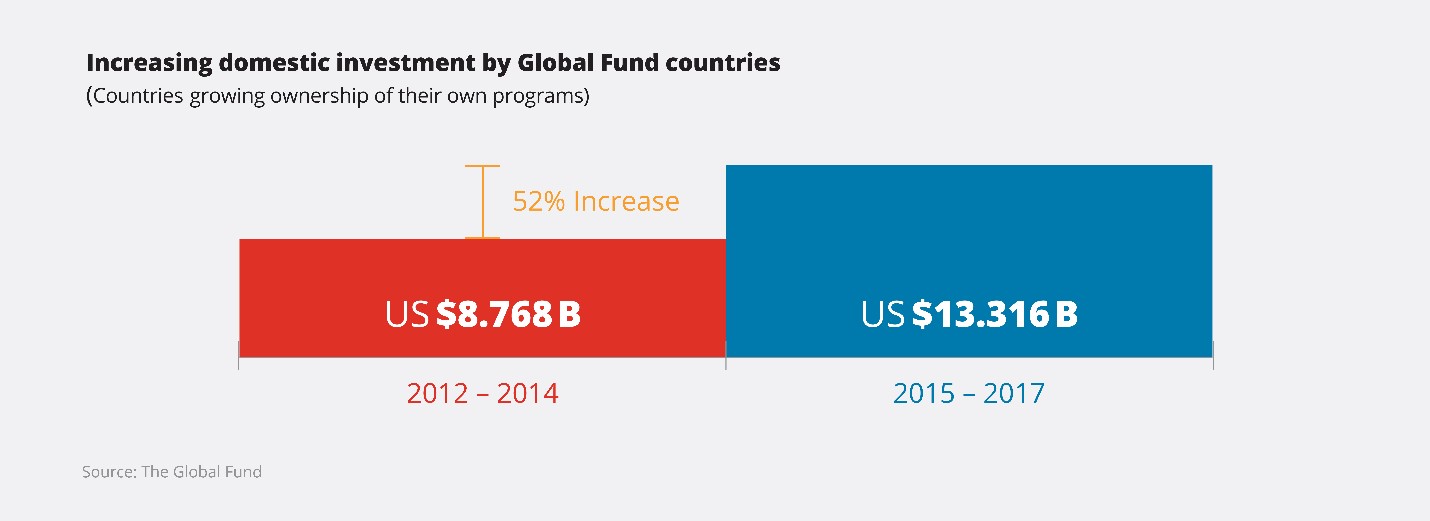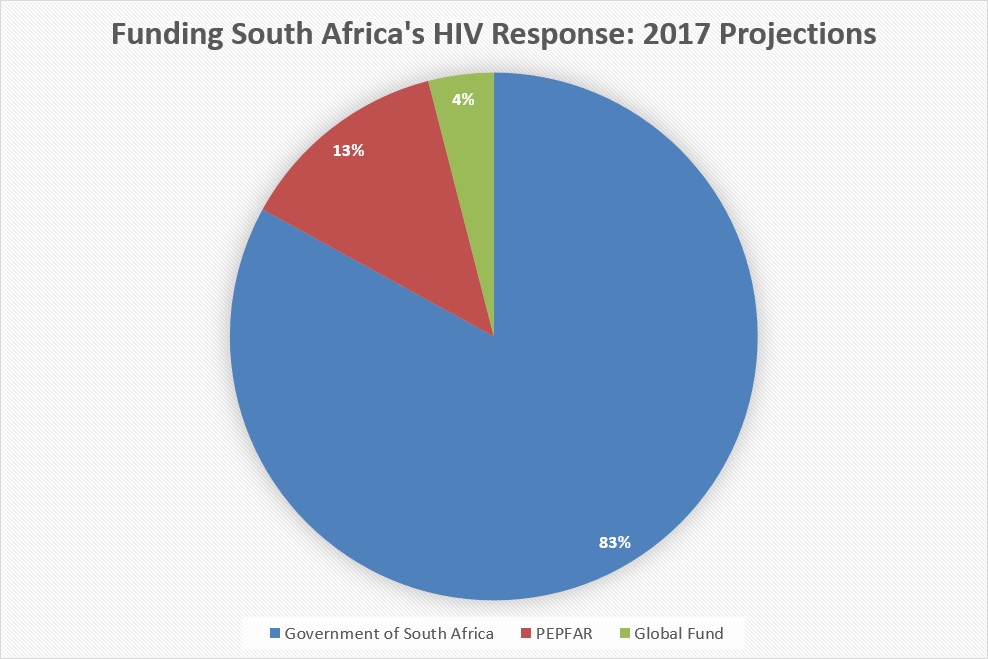May 22, 2017
Click here for a PDF version of this page.
Donor aid remains essential to ending the epidemics of AIDS, tuberculosis (TB) and malaria, and it is also important that, where possible, countries increase their domestic financing for health to better complement Global Fund, bilateral and private sector support. Increased country ownership has been a cornerstone of international assistance since the 2005 Paris Declaration on Aid Effectiveness, and the concept was reaffirmed by the 2008 Accra Agenda for Action.
Domestic financing for health empowers implementing countries with greater ownership and sustainability of their own health programs. It can increase the country’s acceptance of health interventions and more effectively scale and integrate disease programming within the country’s own health systems. The Global Fund supports greater domestic financing by incorporating requirements for this funding into its own funding model.
Leveraging domestic resources
The Global Fund’s funding model has proven successful at leveraging domestic resources. From 2015-2017, Global Fund-supported countries saw a 52 percent increase in domestic financing over the 2012-2014 period.

In the Global Fund’s current strategy period (2017-2022), domestic financing is projected to increase at an average annual rate of 12 percent, to up to $41 billion.
Co-financing and counterpart financing with the Global Fund
The Global Fund helps increase domestic financing through its grant-making requirements. Prior to receiving a grant, recipients must meet a minimum threshold for “counterpart” financing in response to the three diseases, as well as investment in the health sector generally. This threshold varies depending on a country’s economic status and represents a percentage of the national budget devoted to health. Low-income countries must spend at least 5 percent of their national budget on health, lower-lower middle income countries must spend at least 20 percent, upper-lower middle income countries must spend at least 40 percent, and upper-middle income countries must spend at least 60 percent.
In addition, Global Fund co-financing policies encourage increased domestic investment by holding back 15 percent of grants pending evidence of increased domestic health financing.
Domestic financing success
Global Fund incentives are making a difference. African countries committed $10.9 billion to health programs for 2015-2017, marking the first time Africa has mobilized more domestic than foreign funding for health. For example, Mozambique financed an additional $28 million dedicated to Global Fund-supported programs in 2015, which was a 130 percent increase from 2012-2014. The government has committed an additional $118 million through 2017.

In South Africa, the government currently provides more than 75 percent of the funding for HIV/AIDS. The South African government is projected to grow its HIV response in 2017, with more than 83 percent of funding coming from the government, 4 percent from the Global Fund, and 13 percent from PEPFAR. Additionally, over the next three years, the South African government is expected to increase their federal budget to finance more than 85 percent of all treatment for HIV/AIDS and TB.
Private sector steps up to the plate
Private sector partners are raising additional resources to strategically support implementing countries as they grow their own disease response. The private sector doubled its pledge for the Global Fund’s Fifth Replenishment, reaching a total of $250 million for 2017-2019. For example, the Tahir Foundation pledged $65 million during Replenishment to support health programs in Indonesia. In addition, a new Indonesia Health Fund has received an initial investment of $40 million from a partnership between the Global Fund and eight Indonesian business leaders.
Ensuring sustainability and services for those most in need
The Global Fund works proactively with countries to ensure their health programs are scalable and sustainable after countries transition away from Global Fund support. To achieve lasting impact, it is essential that countries reach key populations and improve health systems. The transition process takes time and the Global Fund assists country governments with advance planning to address common challenges and bottlenecks to transition, including support of populations most affected by the three diseases. In the current 2017-2019 funding cycle, the Global Fund is working with upper-middle income countries and lower-middle income countries with low or moderate disease burden to either establish or build upon existing sustainability and transition plans.
The Global Fund also supports countries’ establishment of National Health Accounts (NHAs) to help coordinate health programming, ensure more transparency and decrease duplication of efforts. NHAs track all health spending to ensure efficiency and efficacy, enabling countries to eventually take full ownership over their own disease response. Learn more about domestic financing and the Global Fund’s efforts at www.theglobalfight.org.
